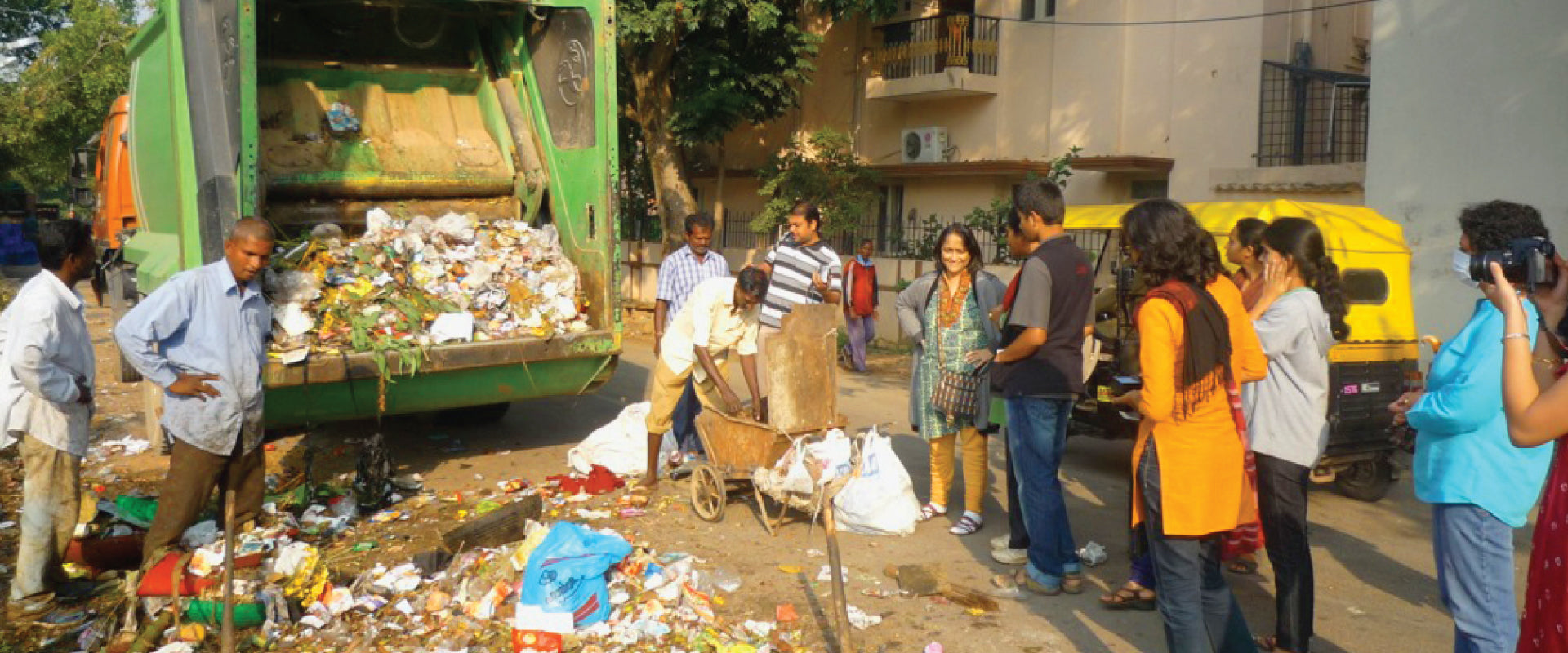From Singapore with love.

It should have got better. I mean there is increased awareness about waste and how we must manage it in our cities. All helped along with the messaging of the Swacch Bharat Campaign and climate action goals.
And yet, the lure of this feature has not diminished – and I wonder what it is going to take for the powers to be to understand why they should not succumb to the temptation to add this feature in their buildings.
Me on a site visit to advise on the organic waste management plan.
“Sir, I see you have planned for chutes in each flat.”
Site Officer proudly “Yes we think this is the ideal way to handle waste collection, our customers who have visited our demo flat have all loved that feature.”
Me: “Sir you know it’s going to be a nightmare in the chute room, it will become a filthy, difficult space with mixed waste overflowing. That kind of mixed waste will not be easy to separate. Your housekeeping staff will resist, and you will not be able to recycle the dry waste or be able to compost your organic waste. Over time the chute will be difficult to service, and you will have lost the investment you are making. You will end up spending more to find a new system – its best you scrap it now”.
Site Officer “Madam this is best practice in Singapore, we are building a future ready housing complex, we have automated way to maintain, it will save a lot of work.”
Me in my head – This perception is very hard to break. We don’t pay attention to context, if only we could step back from this cut, copy paste way of dealing with our built environment it would lead to more circular flows of material and better resilience in face of climate change.
So, lets shut garbage chutes please. To all municipalities, builders, architects, chutes are great for movement of materials but please do not build chutes for managing waste.
Why?
-
Wasting Resources.
Segregation never happens, residents do not even try once you have a chute, it perpetuates the out of sight out of mind model of waste, it lulls you into a false complacency of having “cleaned up”. In actual terms you have created piles that can only be sent to landfill – good resources that can be reused or recycled are all impossible to segregate once they go through the chute – they become too soiled. There are chutes in the market that claim to segregate waste on its way down to the chute room, but this is not effective and does not remove the medical or hazardous waste from the other wastes.
-
Health Hazards
Bacteria found in [garbage] chutes has the potential to cause building wide illness... and steps need to be taken to ensure bacteria is contained and abated in the trash chute." The chute passageway can get lined by liquid spilt during disposal and lead to foul odour and act as the breeding ground for pathogens. It is impossible to clean fully without the use of harsh chemicals, which have their own health hazards. And if there is an illness – the link to the chute as one of the possible causes if often overlooked.
-
Fire hazard.
A Building in Pune caught fire because of the Methane build up in the chute. If, during a fire, the trash chute doors do not close properly, a wind tunnel effect is created funneling the fire up and down the building. Often chute doors get grimly and do not shut fully if not serviced regularly.
-
Expensive to Maintain
There is a perception that a chute will be affordable to maintain. But maintaining the chute to acceptable standards of hygiene and cleanliness is expensive so the cost serves as a deterrent for regular investment by the building association over time. This is vicious cycle – the lack of regular maintenance leads to deterioration of the health of the chute.
The Better way
Builders often feel that collection of waste manually is too expensive and time consuming and difficult to manage. But this not true. There are lots of startups who are working to increase the rates of recycling of different kinds of waste materials, and they can collect segregated and unsegregated waste to give it new life. Add composting on site and the positive impact on emissions is significant. As we urbanize aggressively its critical to build climate action in our built environment.
Now like never before it’s easier to nudge homes to segregate and compost in large apartments and offices. It would be a shame to drop that opportunity down a chute.
Poonam Bir Kasturi
28.12.2022




